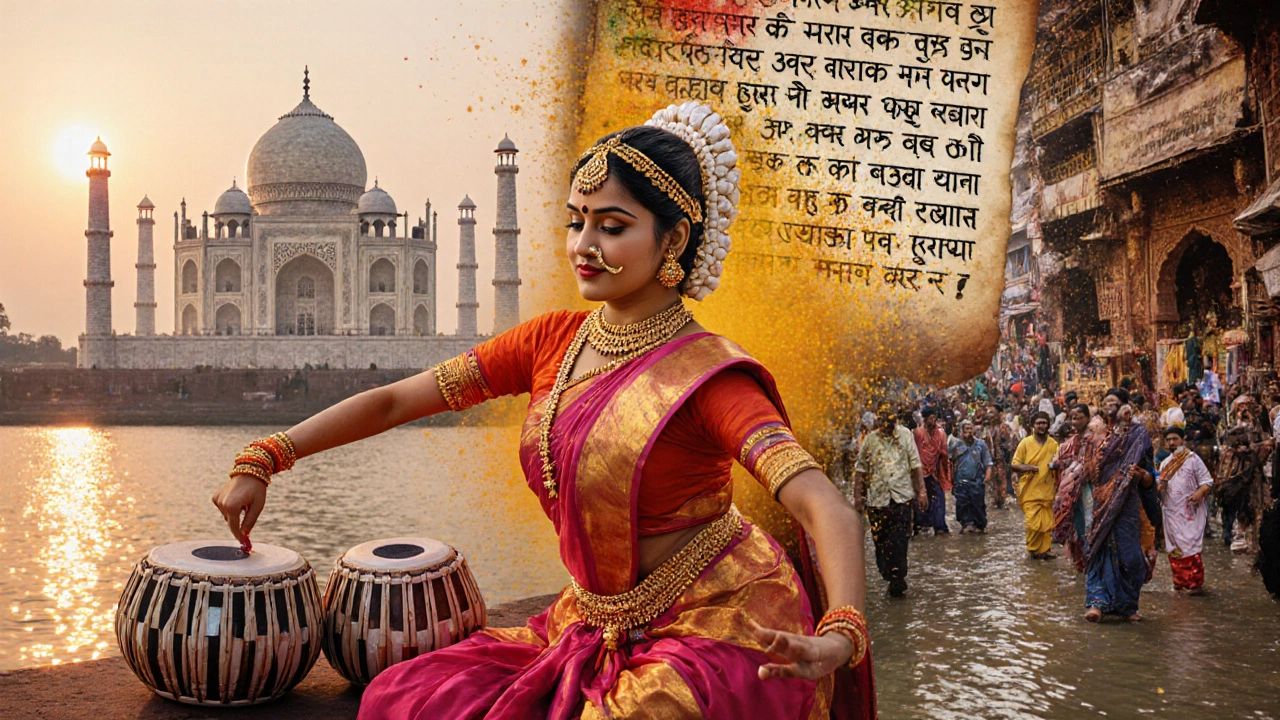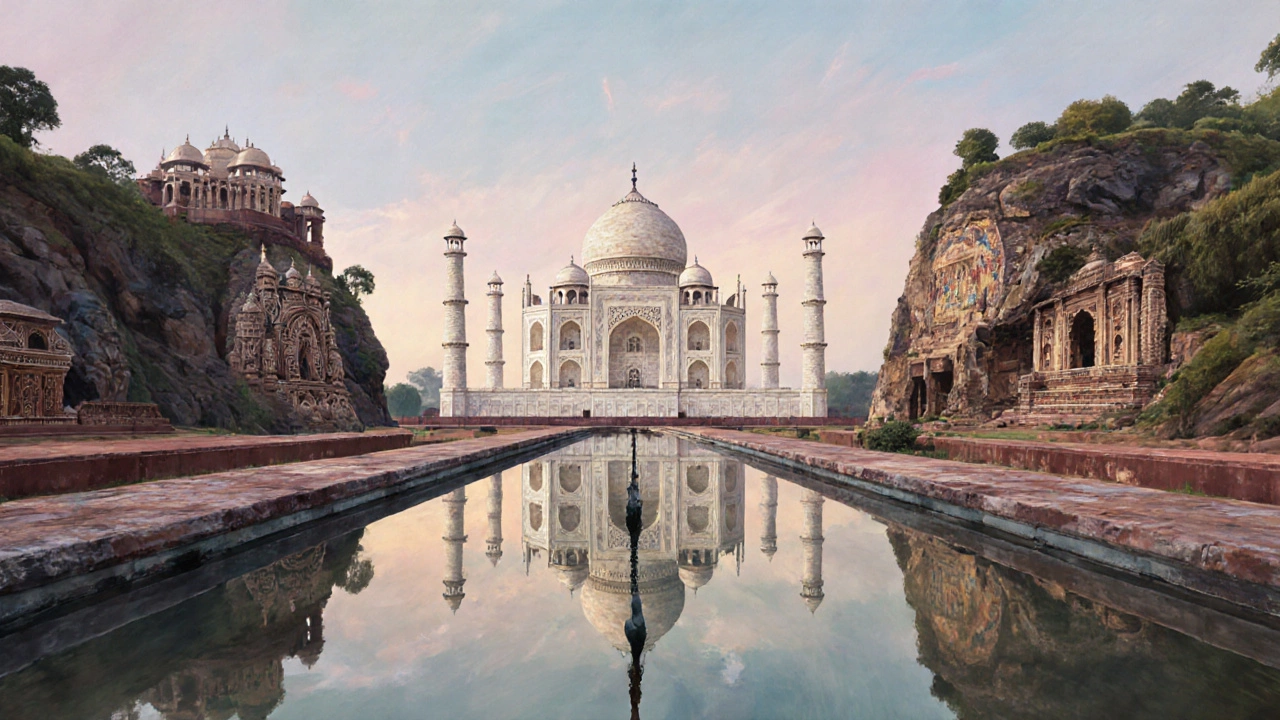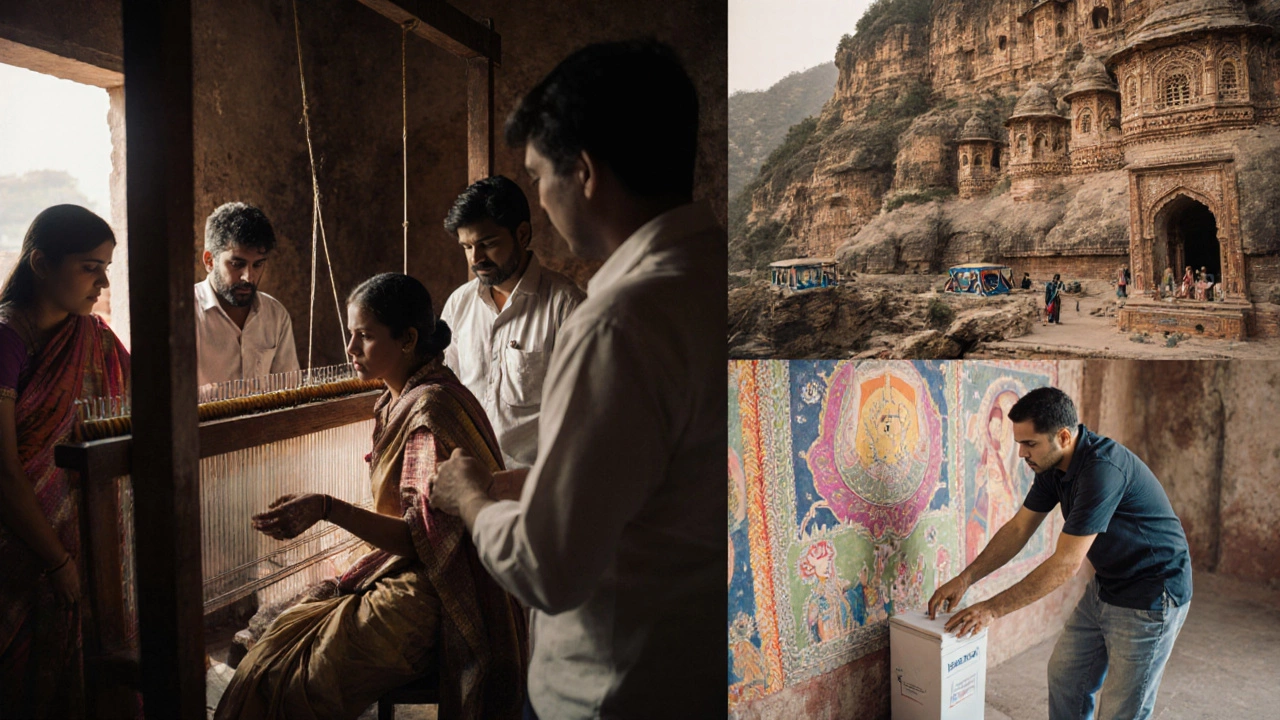India’s Cultural Heritage: Key Sites, Traditions & History
 Oct, 15 2025
Oct, 15 2025
When people think of cultural heritage India, images of marble mausoleums, colorful festivals, and ancient scripts often flash across the mind. But the term covers far more than famous monuments; it’s a living tapestry of architecture, performing arts, languages, rituals, and ecosystems that have evolved over millennia. Below we break down the main strands that make up India’s cultural heritage, spotlight signature sites, and explain why preserving this mix matters for travelers and locals alike.
Defining India’s Cultural Heritage
Cultural heritage of India is the collection of tangible and intangible assets-monuments, landscapes, languages, music, dance, crafts, and customs-that reflect the subcontinent’s historical evolution and diverse peoples. Recognised by UNESCO, national bodies, and community groups, it includes both World Heritage Sites and countless regional traditions that have survived colonial rule, empire shifts, and modernisation.
World‑Class Heritage Sites
India boasts 40 UNESCO World Heritage Sites, the third‑largest tally worldwide. These sites are curated for their universal value, but they also serve as anchor points for broader cultural narratives.
- TajMahal - a 17th‑century ivory‑white marble tomb in Agra, emblematic of Mughal love and architectural brilliance.
- Khajuraho Group of Monuments - a cluster of 20 Hindu and Jain temples famed for intricate carvings that celebrate life, spirituality, and sensuality.
- Ajanta Caves - 30 rock‑cut Buddhist monasteries dating 2nd century BCE, housing some of Asia’s oldest mural paintings.
- Mahabalipuram - a coastal town in TamilNadu, known for its 7th‑century Pallava rock‑cut temples and bas‑reliefs.
- Hampi - the ruins of the Vijayanagara Empire, a medieval city of stone, water, and market life.
Intangible Treasures: Arts, Music & Dance
Beyond bricks and stone, India’s intangible heritage forms the beating heart of daily life. These practices are transmission lines for stories, values, and identity.
- Bharatanatyam - a classical dance from TamilNadu, characterised by precise footwork, expressive gestures, and mythological storytelling.
- Classical Indian Music - comprising Hindustani (North) and Carnatic (South) traditions, built on ragas (melodic frameworks) and talas (rhythmic cycles).
- Ayurveda - a holistic system of medicine that balances body, mind, and spirit through diet, herbs, and lifestyle.
- Sari - the quintessential drape worn by women across the subcontinent, varying in weave, pattern, and regional symbolism.
- Indian festivals - events like Diwali, Holi, Eid, Pongal, and Navratri that blend religious rites, community meals, and vibrant performance arts.

Living Heritage Cities
Some Indian towns act as open‑air museums where heritage lives in the streets.
- Varanasi - one of the world’s oldest continuously inhabited cities, where the Ganges, ghats, and ritual bathing create a spiritual skyline.
- Udaipur - the “City of Lakes”, famed for its Rajput palaces, marble courtyards, and lake‑front festivals.
- Jaisalmer - a golden‑sand desert fortress town, home to the Jaisalmer Fort, havelis, and camel‑based cultural fairs.
Comparative Snapshot of Selected Heritage Sites
| Site | UNESCO Status | Historical Era | Main Cultural Theme |
|---|---|---|---|
| TajMahal | Inscribed (1983) | Mughal, 17thcentury | Monumental architecture, love symbolism |
| Khajuraho Temples | Inscribed (1986) | Chandela dynasty, 10th‑12thcentury | Sculptural art, religious syncretism |
| Ajanta Caves | Inscribed (1983) | Satavahana & later (2nd BCE‑5thCE) | Buddhist mural painting, monastic life |
| Hampi | Inscribed (1986) | Vijayanagara, 14th‑16thcentury | Urban planning, stone architecture |
| Varanasi Ghats | Not inscribed (cultural landscape) | Ancient (≥3rdmillenniumBCE) | Religious rituals, riverine culture |
Challenges to Preservation
Even with global recognition, India’s heritage faces pressures. Urban expansion threatens archaeological zones, while climate change accelerates stone erosion at coastal sites like Mahabalipuram. Illegal sand mining damages riverbanks that support festivals and daily rituals. Moreover, the transmission of intangible arts is dwindling as younger generations migrate to tech hubs. Addressing these issues requires coordinated policies, community stewardship, and responsible tourism that respects local customs.

How Travelers Can Contribute
Visiting heritage sites isn’t just sightseeing; it’s a chance to support conservation.
- Choose certified guides who follow UNESCO‑approved visitor codes.
- Purchase handicrafts directly from local artisans-this sustains traditional skills like block printing and temple metalwork.
- Participate in cultural workshops (e.g., a Bharatanatyam class in Chennai) to experience living traditions.
- Follow site-specific rules: no littering, stay on marked paths, and avoid flash photography in delicate interiors.
- Donate to reputable heritage trusts that fund restoration projects for sites such as the Ajanta murals.
Key Takeaways
- India’s cultural heritage blends UNESCO‑listed monuments with thousands of living traditions.
- Major sites like the TajMahal, Khajuraho, and Ajanta illustrate architectural, religious, and artistic diversity.
- Intangible heritage-dance, music, festivals, Ayurveda-keeps history dynamic and community‑focused.
- Preservation challenges include urbanisation, climate impact, and loss of traditional knowledge.
- Travelers can play an active role by respecting sites, supporting artisans, and engaging in cultural experiences.
Frequently Asked Questions
What qualifies a place as part of India’s cultural heritage?
A site or practice qualifies when it reflects the historical, artistic, religious, or social evolution of the subcontinent and holds significance for current or future generations. UNESCO criteria, national legislation, and community recognition all play a role.
Are all Indian heritage sites UNESCO‑listed?
No. Only 40 sites carry UNESCO World Heritage status. Thousands more are protected under India’s Archaeological Survey, state laws, or are celebrated as intangible cultural heritage without formal inscription.
How can I experience traditional Indian dance while traveling?
Many cultural centres in cities like Chennai, Kolkata, and Delhi offer short‑duration workshops. Look for programs run by government cultural ministries or reputable NGOs, and be sure the instructors are certified practitioners of styles like Bharatanatyam, Kathak, or Odissi.
What are the biggest threats to India’s heritage monuments today?
Rapid urban development, air and water pollution, unchecked tourism footfall, and climate‑induced wear (especially on coastal stone) are the primary threats. Illegal excavations and looting also pose serious risks.
Is Ayurveda considered part of India’s cultural heritage?
Yes. Ayurveda is a 5,000‑year‑old system of holistic health that intertwines medicine, philosophy, and daily lifestyle-making it a core component of intangible cultural heritage recognised by UNESCO.